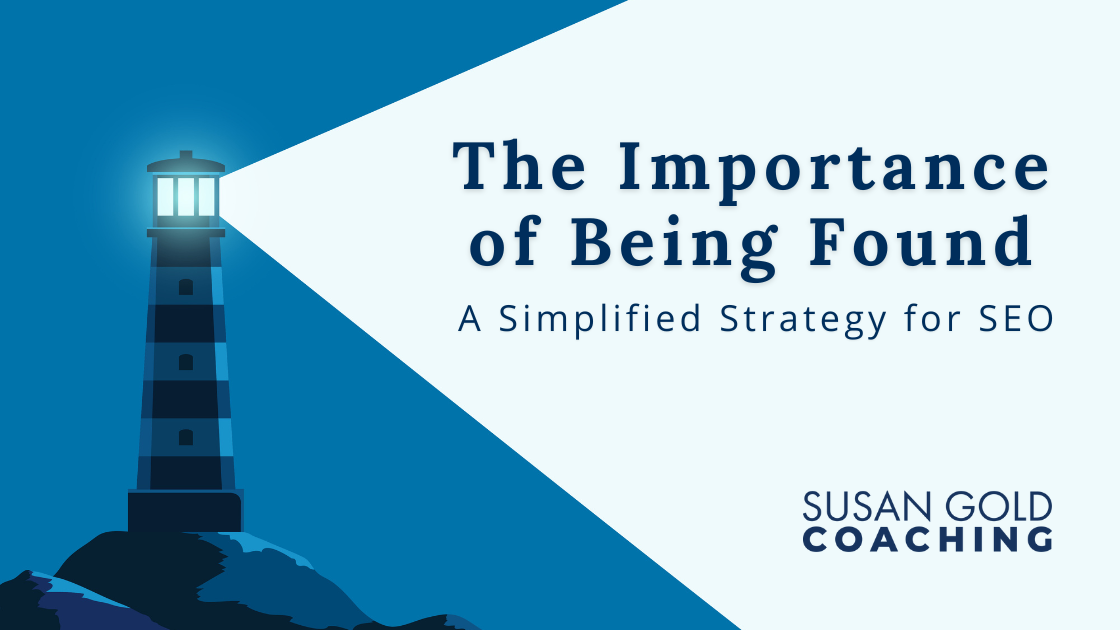A Simplified Strategy for SEO

The Importance of Being Found
In today’s digital landscape, being found by your target audience can make all the difference in the success of your business. Search engine optimization (SEO) has become a critical component of any comprehensive marketing strategy, yet many business owners still struggle to harness its full potential.
The truth is, SEO is a complex and ever-evolving field. As the algorithms powering search engines become more sophisticated, it’s increasingly difficult for businesses to keep up. Outsourcing SEO to an agency may seem like a simple solution, but even then it’s important for business owners to understand the core principles and strategy behind effective search optimization.
In this article, we’ll explore a simplified approach to SEO that can help you take control of your online visibility and drive more qualified leads to your business.
Understanding SEO Basics
At its core, SEO is about aligning the content and structure of your website with the keywords and phrases that your target customers are using to search for your products or services.
When done right, this can catapult your business to the top of the search engine results page, making it easier for potential customers to find you.
However, the path to SEO success is not as straightforward as it may seem. Many business owners make the mistake of assuming that simply peppering their website with “low-price TV” or other generic keywords will automatically drive traffic.
In reality, the most effective SEO strategies are built on a deep understanding of your target audience’s search behavior and the competitive landscape of your industry.
Identifying Your Focus Keywords
The first step in developing your SEO strategy is to understand the specific terms and phrases that your ideal customers are using to find businesses like yours. Tools like SEMrush can provide valuable insights into the search volume and competition for various keywords, as well as how your website and competitors are performing in the organic search results.
Once you have a clear picture of the keywords that are driving the most relevant traffic – your focus keywords – you can prioritize your content creation and optimization efforts around those terms. It’s important to strike a balance between high-volume, competitive keywords, and more niche, long-tail phrases that may be easier to rank for.
Long-tail phrases are more specific, niche keywords and phrases that tend to have lower search volume compared to broad, competitive terms. For example, “TV” would be considered a high-volume, highly competitive keyword while “42-inch 4K smart TV under $500” is a long-tail phrase with lower search volume but potentially higher relevance and conversion rate for certain businesses.
Monitoring and Refining Your Approach
SEO is not a “set it and forget it” proposition. As search engine algorithms and user behavior continue to evolve, you must regularly review and refine your strategy to maintain its effectiveness.
Tracking key performance indicators (KPIs) such as ranking position, search volume, click-through rate, and backlinks can provide valuable insights into the performance of your SEO efforts. By monitoring these metrics over time, you can identify areas for improvement, test new tactics, and ensure that your strategy remains aligned with your business goals.
For example, you’ll want to closely track your ranking position for your target keywords.
Are you consistently ranking on the first page of Google, or even in the top 3 positions? If you’re in a highly competitive industry, even cracking the top 10 could be considered a win. Understanding where you stand compared to your competitors is crucial.
Another important KPI is search volume – the number of times per month people are searching for a particular keyword or phrase.
High-volume, competitive terms may be worth pursuing, but you’ll also want to identify opportunities to target long-tail phrases that are less crowded but potentially more relevant to your target audience.
Monitoring your click-through rate (CTR) can also provide valuable insights. This metric reflects the percentage of people who actually click through to your website after seeing it in the search results. A strong CTR can indicate that your content and meta tags are effectively compelling users to visit your site.
Finally, tracking your backlink profile – the number and quality of websites linking back to your domain – is a critical component of SEO success. The more authoritative and relevant sites that are referencing your content, the more Google will view your website as a trusted and valuable resource.
Staying Ahead of the Competition
One of the biggest challenges in SEO is the constantly shifting competitive landscape. As your competitors refine their own search optimization strategies, it’s crucial to stay one step ahead.
By closely analyzing the content, backlink profiles, and overall search engine performance of your top competitors, you can gain valuable insights into the strategies that are working in your industry. This can inform your own content creation and on-page optimization efforts, helping you to differentiate your brand and capture a larger share of the search market.
When conducting this competitive analysis, be sure to ask key questions like:
- How are my competitors ranking for our target keywords? Are they outperforming me, and if so, why?
- What search terms are they specifically focusing on, and how do those compare to the terms I’m targeting?
- Who else is competing for the keywords I’m pursuing, and how do I need to position my site to stand out?
- Where can I expand my backlink profile to increase my authority and visibility alongside my competitors?
Understanding the nuances of how your competitors are leveraging SEO can provide critical insights to help you refine your own strategy and gain an edge in the race for organic search dominance.
Feeding the “Google Machine”
Ultimately, the key to successful SEO is to think of it as an ongoing process of “feeding the Google machine” with high-quality, relevant content.
This means consistently creating and optimizing content that aligns with your target audience’s search behavior, while also building a strong backlink profile that signals to search engines the authority and trustworthiness of your website.
Whether it’s regularly publishing blog posts, optimizing product pages, or leveraging guest posting opportunities, a comprehensive content strategy is essential for driving sustainable, long-term growth in organic search.
By staying attuned to the latest SEO best practices and continuously refining your approach, you can position your business as an industry leader in the eyes of both search engines and potential customers.
Advanced SEO Metrics to Track
As you progress in your SEO journey, there are a few additional advanced metrics you’ll want to have on your radar:
Authority Score – This SEMrush metric provides an estimate of how authoritative and reputable your website is in the eyes of Google. Factors like backlinks, content quality, and overall site structure all contribute to your Authority Score. Keeping an eye on this number, as well as how it compares to your competitors, can help you gauge the overall health and optimization of your website.
Keyword Difficulty – Some keywords are inherently more challenging to rank for than others, due to factors like search volume, competitiveness, and domain authority of the top-ranking sites. Keyword Difficulty scores can help you identify opportunities where you may be able to outmaneuver your competitors and secure valuable real estate on the search engine results page.
Embracing the Power of SEO
In today’s digital landscape, the ability to be found online often determines success and failure for small and medium-sized businesses. By taking a strategic, data-driven approach to SEO, you can unlock the power of search to drive more qualified traffic, generate more leads, and ultimately, grow your business.
Don’t be tempted to assume that your marketing team or agency has SEO covered. Take the time to understand the core principles and KPIs and work collaboratively to build an SEO strategy that aligns with your unique business goals. With the right approach, you can harness the power of search to feed the Google machine and stay ahead of the competition.
If you have additional SEO questions or need help refining your focus keywords, reach out to me.



